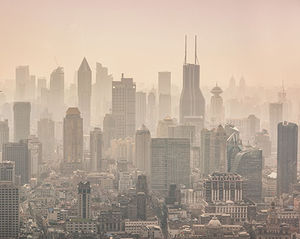 The demanding climate crisis is creating a pressing need to provide greater protection for the environment through increased energy efficiency requirements, new compliance codes, and improved sustainability and design of materials. This need is impacting all industries. The latest regulation changes in energy conservation for buildings, construction, and the HVAC-R industry are a strategic opportunity for driving energy efficiency with mechanical insulation products. Understanding how the regulatory landscape is changing and how insulation materials can help address these new trends should be carefully considered by engineers and designers for future projects.
The demanding climate crisis is creating a pressing need to provide greater protection for the environment through increased energy efficiency requirements, new compliance codes, and improved sustainability and design of materials. This need is impacting all industries. The latest regulation changes in energy conservation for buildings, construction, and the HVAC-R industry are a strategic opportunity for driving energy efficiency with mechanical insulation products. Understanding how the regulatory landscape is changing and how insulation materials can help address these new trends should be carefully considered by engineers and designers for future projects.
Regulatory Changes
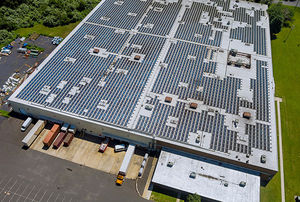 One of the biggest trends in the evolving world of building and energy codes is the focus on energy efficiency. This trend has quickly accelerated with the movement to net-zero buildings, which are buildings that produce as much, or more, energy as they consume. The first commercial-scale net-zero building was at Oberlin College in Ohio in 2000 and now there are over 700 net-zero buildings in the U.S. Another update is the California Title 24 Energy Code which is designed to reduce wasteful and unnecessary energy consumption in newly constructed and existing buildings. The California Energy Commission (CEC) reviews the Energy Code every three years, and the 2022 Energy Code encourages efficient electric heat pumps, establishes electric-ready requirements for new homes, expands solar and battery storage standards, strengthens ventilation standards, and more. This is going above and beyond IECC codes that are currently in place and while most states and cities are slow to adopt, there is movement. Surveys show that 72% of states adopted some version of the code in 2021 and California and Nevada have fully adopted the new code updates. It is now time for all regions to address energy inefficiencies to create sustainable structures as a long term solution for future buildings.
One of the biggest trends in the evolving world of building and energy codes is the focus on energy efficiency. This trend has quickly accelerated with the movement to net-zero buildings, which are buildings that produce as much, or more, energy as they consume. The first commercial-scale net-zero building was at Oberlin College in Ohio in 2000 and now there are over 700 net-zero buildings in the U.S. Another update is the California Title 24 Energy Code which is designed to reduce wasteful and unnecessary energy consumption in newly constructed and existing buildings. The California Energy Commission (CEC) reviews the Energy Code every three years, and the 2022 Energy Code encourages efficient electric heat pumps, establishes electric-ready requirements for new homes, expands solar and battery storage standards, strengthens ventilation standards, and more. This is going above and beyond IECC codes that are currently in place and while most states and cities are slow to adopt, there is movement. Surveys show that 72% of states adopted some version of the code in 2021 and California and Nevada have fully adopted the new code updates. It is now time for all regions to address energy inefficiencies to create sustainable structures as a long term solution for future buildings.
Design Shifts
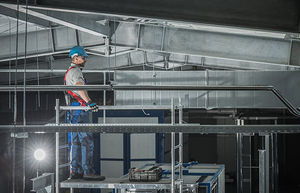 Another shifting trend through customer demand that is impacting the building materials industry is improved building aesthetics. At one time, the appearance of ductwork was not considered a functional design element. Now, designers and architects want visually appealing ducts which, in turn, impacts the look of the insulation that helps the system maintain thermal and energy efficiency. While traditional insulation requirements were only thermal control, acoustical control, condensation control, fire safety, and energy efficiency, now new modern insulation requirements include outward appearance and design. Architects and designers need to be aware that altering the duct, its insulation, or its jacketing could impact its performance or cause it to fail building codes or safety standards. They should seek the advice of the mechanical system designer, an engineer or technical expert to ensure that aesthetic changes are allowable.
Another shifting trend through customer demand that is impacting the building materials industry is improved building aesthetics. At one time, the appearance of ductwork was not considered a functional design element. Now, designers and architects want visually appealing ducts which, in turn, impacts the look of the insulation that helps the system maintain thermal and energy efficiency. While traditional insulation requirements were only thermal control, acoustical control, condensation control, fire safety, and energy efficiency, now new modern insulation requirements include outward appearance and design. Architects and designers need to be aware that altering the duct, its insulation, or its jacketing could impact its performance or cause it to fail building codes or safety standards. They should seek the advice of the mechanical system designer, an engineer or technical expert to ensure that aesthetic changes are allowable.
Environmental Sustainability
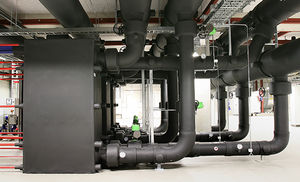 More than two decades ago, Armacell made a strategic decision to manufacture products only in ways that minimize environmental impact. In 1989, the company was the first insulation manufacturer to abstain from using CFCs, long before the Montreal Protocol made this mandatory. Preserving and enhancing the quality of the environment is an integral part of the Armacell corporate philosophy and we are constantly searching for ways to reduce raw-material use, energy consumption, and waste levels.
More than two decades ago, Armacell made a strategic decision to manufacture products only in ways that minimize environmental impact. In 1989, the company was the first insulation manufacturer to abstain from using CFCs, long before the Montreal Protocol made this mandatory. Preserving and enhancing the quality of the environment is an integral part of the Armacell corporate philosophy and we are constantly searching for ways to reduce raw-material use, energy consumption, and waste levels. 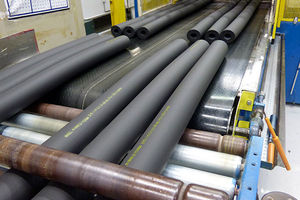 Our insulation materials are among the few industrially manufactured products that actually save more energy in the course of their product life than is required for their manufacture. Armacell’s current Life Cycle Assessment (LCA) established that 140 times more energy is saved through ArmaFlex products than is needed for their production, transport, and disposal. To demonstrate our commitment, Armacell has published two Environmental Product Declarations for our AP ArmaFlex pipe and sheet and roll insulation in North America. The third-party documents are the first EPDs released by any elastomeric foam insulation manufacturer in the U.S. The EPDs provide reliable “cradle to installation with end-of-life” information about the product’s resource usage and waste output as well as its impact on the environment, such as global warming potential, ozone depletion and ecotoxicity. We have also signed onto the U.N.’s Global Compact, the world’s most important business network for sustainable globalization. Our fiber free, elastomeric products have long contributed to better indoor air quality and are recognized by many green building standards, including the U.S. Green Building Council’s Leadership in Energy and Environmental Design (LEED®) and many of our products are GREENGUARD Gold certified, UL’s most stringent certification. Armacell makes creating thermal and energy efficiency easy while looking good for years to come.
Our insulation materials are among the few industrially manufactured products that actually save more energy in the course of their product life than is required for their manufacture. Armacell’s current Life Cycle Assessment (LCA) established that 140 times more energy is saved through ArmaFlex products than is needed for their production, transport, and disposal. To demonstrate our commitment, Armacell has published two Environmental Product Declarations for our AP ArmaFlex pipe and sheet and roll insulation in North America. The third-party documents are the first EPDs released by any elastomeric foam insulation manufacturer in the U.S. The EPDs provide reliable “cradle to installation with end-of-life” information about the product’s resource usage and waste output as well as its impact on the environment, such as global warming potential, ozone depletion and ecotoxicity. We have also signed onto the U.N.’s Global Compact, the world’s most important business network for sustainable globalization. Our fiber free, elastomeric products have long contributed to better indoor air quality and are recognized by many green building standards, including the U.S. Green Building Council’s Leadership in Energy and Environmental Design (LEED®) and many of our products are GREENGUARD Gold certified, UL’s most stringent certification. Armacell makes creating thermal and energy efficiency easy while looking good for years to come.
